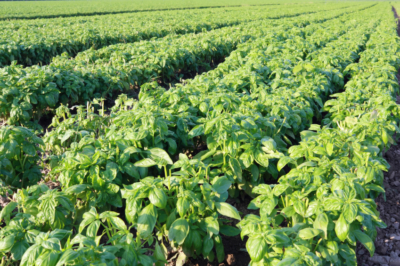Last updated on October 23rd, 2023 at 08:58 pm
Basil tends to gradually become woody over time. This is accompanied by reduced growth of the leaves and a noticeable loss of aroma. What you can do against this undesirable development, you will learn here.

Regular pruning prevents lignification
The vast majority of all basil species and varieties are created by Mother Nature as a semi-shrub or bush. If your king herb tends to lignify, this is a completely natural process. However, you do not have to accept this development, because this is how a mullein remains juicy and green:
- as part of the harvest, always cut whole shoots
- regularly cut older branches at the base
- do not pick the branches, but cut them with a sharp knife
As long as at least one pair of leaves remains on the mullein, the plant will sprout fresh from this. It is therefore worthwhile to keep an eye on the herb plant and, if necessary, cut back excess shoots even without current need. What is not immediately consumed, can be very well preserved by freezing or pickling.
Woodiness is desired here
In order for perennial basil varieties, as well as wild basil, to withstand the weather conditions, they depend on woody shoots. Thus, the herb plants can spend the summer in the bed without lying flat on the ground after a thundershower. In addition, woody branches provide them with sufficient hardiness to survive wintering indoors well.
A prime example of woody basil is the wild variety from its country of origin, India. Known by the cultivar name ‘Tulsi’, the herb plant thrives as a richly branched bush. The reddish colored leaves convince with a light bloodworm aroma, which remains even after lignification. Whole shoots are also always harvested here to thin out the shrub at the same time.
Tips & Tricks
If the lignification of an annual basil is already far advanced, you do not have to give up the herb enjoyment. Simply cut off several shoot tips as cuttings that have not become woody. The cuttings will root quickly in a water glass. Planted in a nutrient-rich substrate, they will quickly turn into a vigorous young plant with a juicy green habit.


